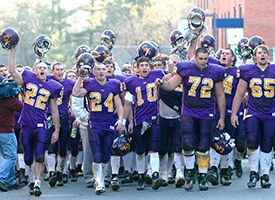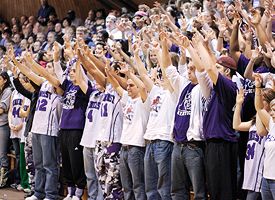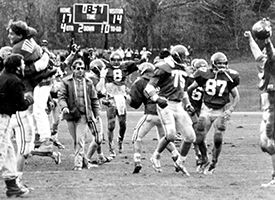| ESPN.com: NCAA | [Print without images] |
 | |
| One of the longest traditions is 'The Walk,' which features Williams, in full uniform, walking from Weston Field right up the middle of Spring Street to St. Pierre's Barber Shop, where the team celebrates (and occasionally shaves a head.) |


E.J. Mills
 | |
| Amherst fans pack the gym for a hoops matchup with Williams. |
 | |
| Williams' 1989 win over Amherst kept its first undefeated season intact. |